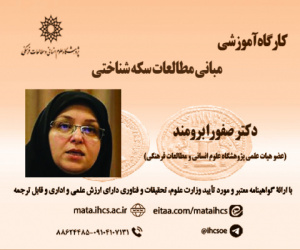چالش های اجرایی نهاد نظارت سامانه های الکترونیکی در نظام عدالت کیفری ایران با نگاهی بر رویه قضایی (مقاله علمی وزارت علوم)
درجه علمی: نشریه علمی (وزارت علوم)
آرشیو
چکیده
با توجه به ضرورت به روز شدن مقررات کشورها، قانون گذار در سال 1392، نهاد نوین نظارت الکترونیکی را در ماده 62 قانون مجازات اسلامی وارد نظام عدالت کیفری ایران کرد که اجرای دقیق آن می تواند از حبس های غیر ضرور جلوگیری کند و با اعمال آن نسبت به محکومین به حبس سعی بر آن دارد که در راستای اهداف مجازات ها اعم از پیشگیری از تکرار جرم قدم بردارد. نظارت الکترونیکی به مجموعه فرایندهایی گفته می شود که به موجب قانون از سوی مقام قضایی ذی صلاح در راستای کنترل و در دسترس بودن بهره وران در محیط خارج از زندان با استفاده از تجهیزات الکترونیکی از طریق پابند الکترونیکی اعمال می شود. در این نوشتار، با استفاده از روش توصیفی و تحلیلی و بهره گیری از مصاحبه با کنشگران این حوزه، چالش های ساختاری اجرایی آن مورد اشاره قرار گرفته است. وجود چالش های ساختاری مانند ابهام در مرجع صادر کننده نظارت سامانه های الکترونیکی و کیفیت تصمیم مورد اشاره قرار گرفته است. همچنین، چالش های اجرایی نظیر عدم روشن بودن عملکرد تجهیزات، یاد شده و نیز نامشخص بودن مفهوم مأموران نظارتی و تداخل وظیفه با ضابطان دادگستری، هزینه های بالای تولید این تجهیزات و در نتیجه، وثیقه های سنگین تودیعی توسط بهره وران این سامانه ها به منظور تضمین جبران خسارت، امکان عدول از نظر قطعی دادگاه راجع به تصمیم یاد شده و نیز فقدان ضمانت اجرای مناسب مورد بحث گرفته است.Executive challenges of the institution of monitoring electronic systems in Iran's criminal justice system with a look at the judicial procedure
Due to the need to update the regulations of the countries, in 2012, the legislator introduced the new institution of electronic monitoring in Article 62 of the Islamic Penal Code into the criminal justice system of Iran. Imprisonment strives to achieve the goals of punishments, including prevention of recidivism. Electronic monitoring is a set of processes that are applied by the competent judicial authority in order to control and the availability of users in the environment outside the prison using electronic equipment through electronic binding. In this article, its structural-executive challenges have been pointed out by descriptive and analytical methods and by using interviews with the agents of this space. Existence of structural challenges, including ambiguity in the issuing authority for monitoring electronic systems and decision-making quality, and implementation challenges, including the lack of transparency in the operation of the mentioned equipment, as well as the lack of clarity in the concept of monitoring officers and overlapping duties with judicial officers, the high costs of producing these equipments, and as a result The security deposit for the users of these systems is mentioned in order to guarantee compensation, the possibility of violating the court decision regarding the said decision and also the lack of guarantee of correct implementation.







